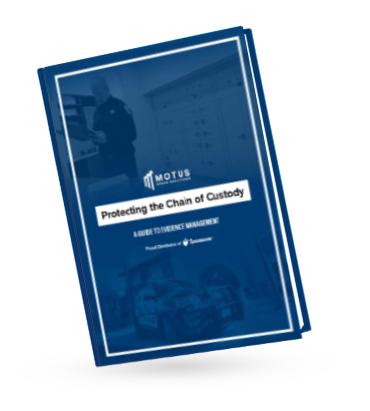Prefer to browse the contents?
Check it out below.
The evidence management profession has come a long way in recent years. Here are the top 10 trends and insights that we’re hearing about as we work with law enforcement and evidence management professionals.
Learn how to keep evidence organized and secure from the moment it enters your facility. Here are areas you will want to consider, along with overviews of temporary evidence locker types and long-term evidence storage options.
Some of the most challenging items to secure are those that are at highest risk for theft – guns, drugs, and money. Based on IAPE standards, these items must be stored in a separately locked area within your property and evidence storage room to create two layers of security.
There are a few methods for achieving this standard:
- Cage, walk-in vault, or room within a room: If your department has enough space and a large enough evidence inventory of firearms, narcotics, and valuables, then creating a separately locked closet, cage, or room within your evidence storage room may be a good option. Be sure the walls and ceiling are secure and the door is securely lockable.
- Locker or Locked Cabinet: For agencies with a smaller quantity of drugs, firearms, and money, a locker or locked cabinet within the evidence room can be a more space-efficient and budget-friendly option. Be sure to use a sturdy locker with a separate padlock on a hasp to ensure security, such as an Weapons Evidence Lockers & Narcotics Evidence Lockers. They’re designed specifically to secure and organize smaller inventories of gun, drug, and weapon evidence.
- Separately-locked section of mobile system: If your department stores evidence on a high density mobile evidence storage system, you can designate one shelving section specifically for guns, drugs, and money evidence. This section must be separately locked, either through a PIN code, physical lock, or locking tambour doors.
If you’re planning to renovate your evidence room or even planning to build a new evidence storage facility, doing your homework now can save headaches later. Here’s how to design your evidence room for future growth.
- Consider current trends
- Use data from past crimes to estimate future needs
- Build in extra floor-loading capacity
- Lay the groundwork for high-density storage, even if you don’t need it now
With DNA evidence from property crime scenes yielding such high results, it makes sense to more routinely collect, analyze, and preserve biological evidence. But biological evidence storage can be a challenge and must often be kept for decades, so it’s essential to establish and maintain proper preservation conditions to preserve the integrity of evidence over the years.
Short-Term Evidence
Refrigerated evidence lockers, which are specifically designed for law enforcement to elimated any cahin of custody or cross contaimnation concerns.
Long-Term Evidence
Departments that need to store a large quantity of biological evidence can opt for walk-in coolers and/or freezers. They save on cooling expenses by using high-density storage systems.
We see it all the time: evidence storage areas are often full to overflowing at police departments and other law enforcement agencies. Different states have different rules governing the timing of evidence disposition, and different rules apply based on the severity of the crime.

We’ve compiled all our evidence management tips, trends, and best practices into one convenient download. Download Protecting the Chain of Custody: A Guide to Evidence Management to read offline and share.